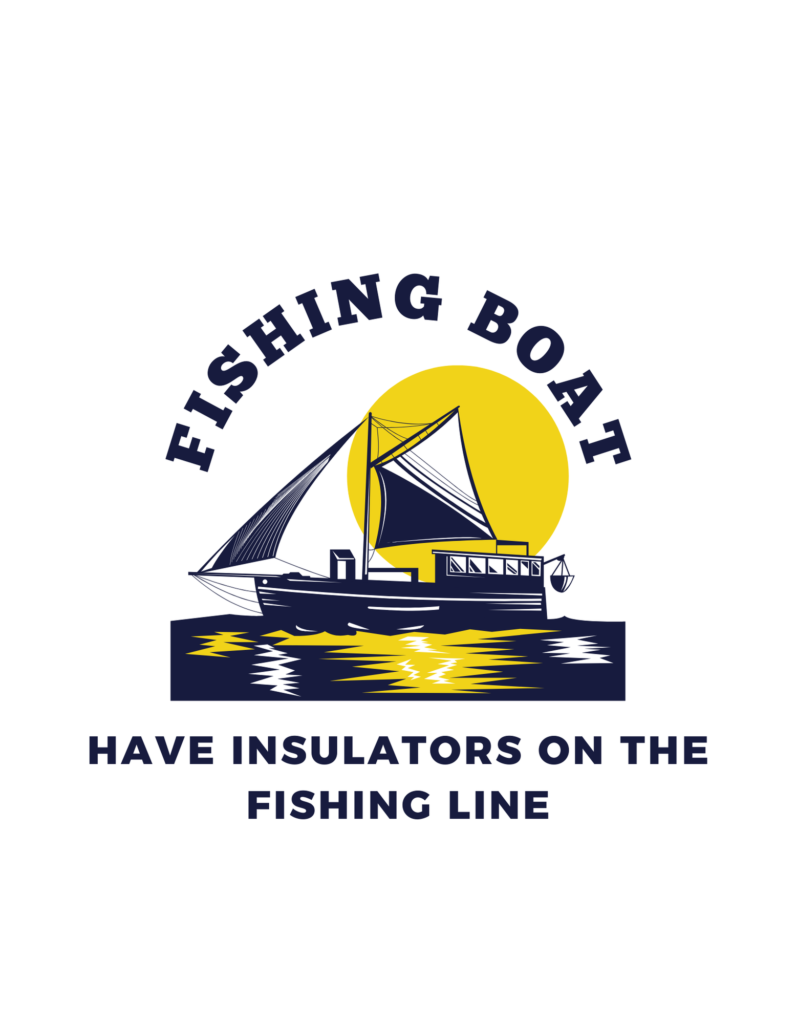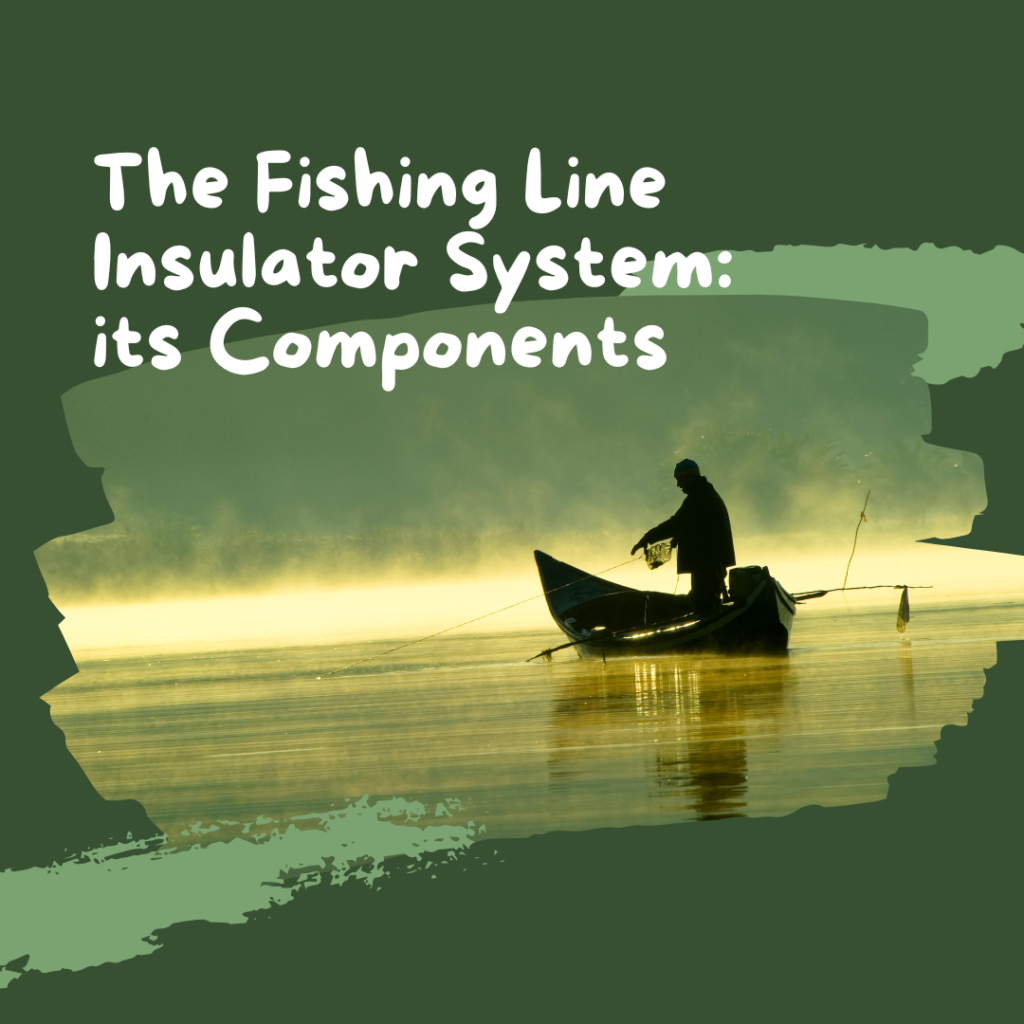Fishing boats have a slew of specialized equipment onboard to help fishermen work quickly and safely. An insulator at the fishing line is one of the most essential yet often forgotten element when preparing gear for fishing. These devices are critical for ensuring the safety of crew, protecting equipment and even increasing efficiency while fishing. In this ultimate guide, we will look into how and why fishing boats have insulators on their fishing lines and what part they play in contemporary commercial fishing operations.
What The Heck Are Fishing Line Insulators?
Fishing line insulators are a type of non-conductive accessory installed on the fishing lines used by commercial fishing vessels running rods. They are mostly created from materials like:
- Ceramic
- Rubber
- Plastic composites
- Fiberglass
- Polyethylene
These are selected for their electrical insulating and durability properties in harsh marine environments.
The Fishing Line Insulator System: its Components

A fishing line insulator system is typically comprised of several key components:
- Main body insulator: Body that stops the electrical currents.
- Points of attachment: These are the points that attach the insulator to the fishing line.
- A. Protective coatingThe outer layer that protects the insulator from environmental damage
- Mounting hardware — The mounting hardware secures the insulator to the line.
- Stress relief features: These aid in dispersing tension and reducing the risk of damage While using the insulator
Protect from Electric Noise
Fishing boats nowadays carry diverse electronic systems like:
- Navigation systems
- Sonar devices
- Radar systems
- Radio equipment
- Electric winches
They create electromagnetic fields which can jam the spinning line. Insulators will stop these electrical fields from travelling down the fishing line, and interfere with the process of fishing. In tumbling of electronic interferences fish behaviours altered, catch rates reduced without insulators in place and the fishing operation becomes less effective.
Lightning Protection
The weather is also often chaotic and fishing boats may be more exposed to the dangers of a lightning strike. Insulators help to ensure that lightning cannot pass along the fishing lines into the vessel and injure personnel. Insulators protect BOTH by blocking the flow of electrical current.
That from electrical shocks to the crew.
So, fishing gear from lightning strike damages.
Additionally, they make sure the vessel stays whole in storms to protect the crew and expensive gear aboard.
Enhanced Fishing Efficiency
Other fishing boats are using the insulator not only for safety but also for way to fish better them. These devices assist in three different ways:
Lowering the visibility of the line in the water, which can be an effective tactic to reduce fish detection of the line.
Reducing electrical signatures that could deter the fish.
Ensuring that static electricity does not build up to impact the catch.
Besides these advantages, they also stabilize line tension, which keeps the fishing line at the proper strength while you are out fishing.
Technical Fishing Line Insulators
Material Properties
The choice of material for line insulators also greatly affects their functionality. Some of the important material properties are:
- Dielectric strength: It indicates the capacity to withstand flow of current through material.
- Weather: Insulators are exposed to significant marine environmental conditions.
- UV protection — Since fishing insulators are often exposed to sunlight, UV protection is extremely important so that the materials will not degrade.
- Durable: They Are Required to Withstand the Terrible Stretch of Hours-long Fishing_operator
- Thermal performance: Insulators should have good performance in hot and cold marine climates.
Installation Requirements
For the fishing line insulators to operate effectively, installation must be done in a timely manner. It’s what you must do to maximize performance:
- Location of Insulators: Insulators are placed in Line to restrict the electric interference at key locations.
- Adequate spacing: Insulators are less efficient if there are fewer or too many of them.
- Tight-fitting insulators: Insulators must be made fast to prevent slipping or displacement in fishing.
- Check them often: Check insulators for wear and damage regularly to help maintain their proper function.
Advantages of Fishing Line Insulators

Safety Advantages
Fishing line insulators enhance the overall safety of commercial fishing:
- Crew protection: Insulators block electricity from flowing through the fishing line and can prevent electrical shocks to the crew.
- Protection of equipment — In the event of storms, insulators can protect high-value fishing gear and help prevent lightning strikes on them, preventing damage.
- How it prevent electrical fires — With the protection from insulator, electrical fires are unlikely to happen.
- Insulators protect electrical systems: prevents fishing equipment from breaking up due to electric shock.
Economic Benefits
Fishing line insulators with good quality can also save money in the long run:
Longer lifespan of the equipment: Insulators not only prevent damage to fishing lines and other equipment but also extend their service life.
- Higher catch rates: Less electrical interference results in better fishing operations, directly contributing to increased profit generation.
- Lower expenses for maintenance: Use of insulators help to avoid the repair which helps in decreasing the overall cost of maintenance of fishing boat.
- Reduced insurance costs: If you use proper insulators on your fishing vessels, you may experience lower premiums, since this type of system can prevent large damages to your boat.
How to Maintain Fishing Line Insulators
Regular Inspection
Fishing line insulators need regular inspection to ensure optimal performance:
- Physical inspections for fractures or degradation.
- Testing for the electrical conductivity of the insulator.
- Removal of any build-up of marine fouling over time.
- Checking the attachment points for any looseness.
Replacement Guidelines
- Fishing Line Insulators: How Often Should They be Replaced To Ensure Safety and Efficiency
- Exposure to severe weather: If the boat went through a heavy storm with high wind, waves or lightning passing overhead, replacing the insulator is advisable.
- When it is visibly damaged: If you can see some cracking or burning even, then you know it is time for a replacement.
- As suggested by the manufacturer for insulators: They should be replaced based on the schedule determined as recommended by the manufacturer.
Environmental Considerations
Eco-Friendly Options
With sustainability becoming the new buzz word in commercial fishery, most operations are adopting eco-friendly insulation:
- Eco-friendly materials: Some new insulator types can break down naturally, so they have less ecological impact.
- Recyclable insulators: To help reduce plastic waste, recyclable (and non-fuel-based) components are starting to appear in the market.
- Environmentally-friendly manufacturing systems: The fishing business is shifting towards purchasing products that are made of sustainable practices.
Impact on Marine Life
Fibreglass insulators for fishing line also help save marine life:
- Decreased electromagnetic interference: Fishing activities can disturb the marine environment through its electromagnetic signature, a phenomenon that insulator mitigates.
- Less habitat destruction: Insulators minimize damage to marine habitats or breeding grounds.
- Safer fishing: Insulators are also ensuring safer methods of fishing whereby less marine life is impacted by the process.
Frequently asked questions about fishing line insulators
Q: What is the main reason behind fishing line insulators?
Fishing line insulating chips are mainly used to prevent electrical interference, as well as prevent fishing line from being damaged by lightning and other electromagnetic disturbances.
How And Why Fishing Line Insulators Improve Fishing Efficiency?
Fishing line insulators cannot be seen by fish and significantly reduce the electrical signals that may frighten fish thus increasing catch rates.
Is there an eco-friendly alternative to fishing line insulators?
Answer: Yes, a lot of new fishing line insulators are made from eco-friendly materials such as biodegradable or recyclable products to help lower this impact on the environment.
Fishing line insulators should be replaced as and when needed to keep your equipment safe.?
Fishing line insulators need to be checked regularly and, upon heavy exposure to windy conditions, physical damage or according to manufacturer specifications should be replaced.
Conclusion
Fishing line insulators are a key ingredient in the mix of things that happen at commercial fishing. They serve to protect the crew, safeguard expensive gear, and optimize fishing operations by averting electrical noise. Whether technology continues to develop or not, fishing line insulators will always play an important role in succeeding on a fishing trip but also keeping our oceans and waters safe. This is not only a practical but also a responsible choice as good quality insulators contribute to the long-term sustainability of the fishing industry.